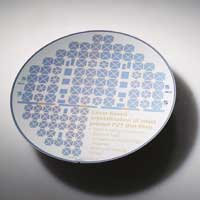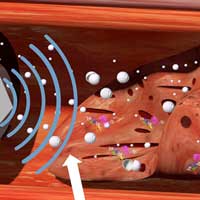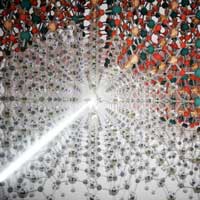 In 1998, spectroscopic studies on the Kondo effect using scanning tunnelling microscopy were published, which are considered ground-breaking and have triggered countless others of a similar kind. Many of these studies may have to be re-examined now that researchers have shown that the Kondo effect cannot be proven beyond doubt by this method. Instead, another phenomenon is creating precisely the spectroscopic 'fingerprint' that was previously attributed to the Kondo effect.
In 1998, spectroscopic studies on the Kondo effect using scanning tunnelling microscopy were published, which are considered ground-breaking and have triggered countless others of a similar kind. Many of these studies may have to be re-examined now that researchers have shown that the Kondo effect cannot be proven beyond doubt by this method. Instead, another phenomenon is creating precisely the spectroscopic 'fingerprint' that was previously attributed to the Kondo effect.
Thursday, January 7, 2021
Researchers question fundamental study on the Kondo effect
 In 1998, spectroscopic studies on the Kondo effect using scanning tunnelling microscopy were published, which are considered ground-breaking and have triggered countless others of a similar kind. Many of these studies may have to be re-examined now that researchers have shown that the Kondo effect cannot be proven beyond doubt by this method. Instead, another phenomenon is creating precisely the spectroscopic 'fingerprint' that was previously attributed to the Kondo effect.
In 1998, spectroscopic studies on the Kondo effect using scanning tunnelling microscopy were published, which are considered ground-breaking and have triggered countless others of a similar kind. Many of these studies may have to be re-examined now that researchers have shown that the Kondo effect cannot be proven beyond doubt by this method. Instead, another phenomenon is creating precisely the spectroscopic 'fingerprint' that was previously attributed to the Kondo effect.
Printed miniature loudspeaker listening into the future
 In an additive manufacturing process, miniature loudspeakers can be produced efficiently and cost-effectively as part of piezoelectric microelectromechanical systems - so-called piezo-MEMS - using a combination of inkjet printing and laser technology.
In an additive manufacturing process, miniature loudspeakers can be produced efficiently and cost-effectively as part of piezoelectric microelectromechanical systems - so-called piezo-MEMS - using a combination of inkjet printing and laser technology.
Nanodroplets and ultrasound 'drills' prove effective at tackling tough blood clots
 Engineering researchers have developed a new technique for eliminating particularly tough blood clots, using engineered nanodroplets and an ultrasound 'drill' to break up the clots from the inside out. The technique has not yet gone through clinical testing. In vitro testing has shown promising results.
Engineering researchers have developed a new technique for eliminating particularly tough blood clots, using engineered nanodroplets and an ultrasound 'drill' to break up the clots from the inside out. The technique has not yet gone through clinical testing. In vitro testing has shown promising results.
Chemists invent shape-shifting nanomaterial
 Chemists have developed a nanomaterial that they can trigger to shape shift - from flat sheets to tubes and back to sheets again - in a controllable fashion. The nanomaterial holds potential for a range of biomedical applications, from controlled-release drug delivery to tissue engineering.
Chemists have developed a nanomaterial that they can trigger to shape shift - from flat sheets to tubes and back to sheets again - in a controllable fashion. The nanomaterial holds potential for a range of biomedical applications, from controlled-release drug delivery to tissue engineering.
Inducing transparency by kicking the atoms
 All photo-electronic devices work on the basis that the materials inside them absorb, transmit and reflect light. Understanding the photo properties of a specific material at the atomic level not only helps to decide what material to choose for a given application but also opens up ways to control such properties on demand.
All photo-electronic devices work on the basis that the materials inside them absorb, transmit and reflect light. Understanding the photo properties of a specific material at the atomic level not only helps to decide what material to choose for a given application but also opens up ways to control such properties on demand.
Subscribe to:
Posts (Atom)
